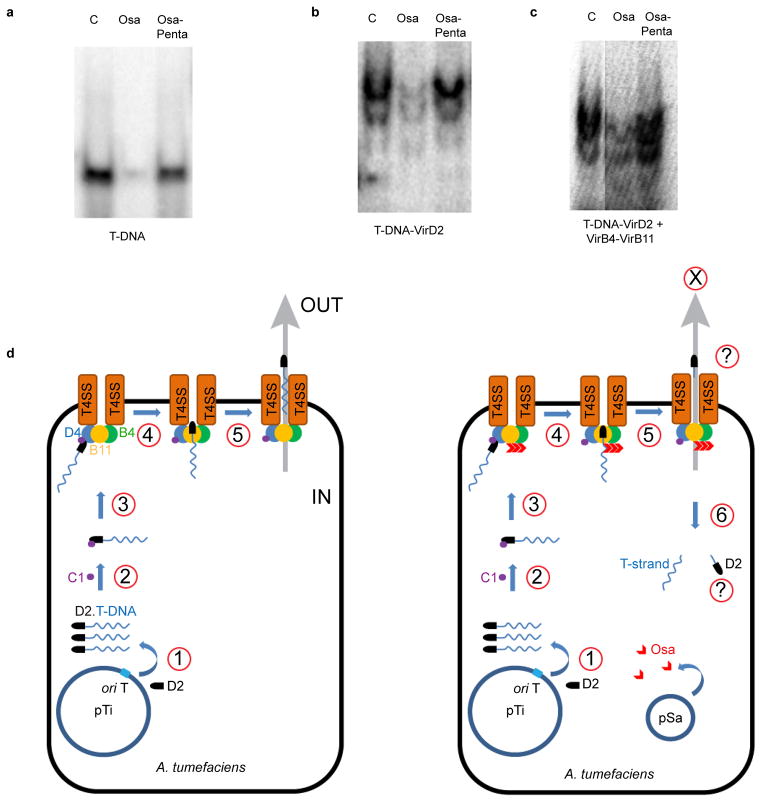Figure 5.
In vitro reconstitution of plasmid fertility inhibition and the FIN model. Osa digests naked T-DNA (a), and T-DNA linked to VirD2 in the absence (b), and presence of T4SS ATPases VirB4 and VirB11 (c). (d): Proposed model of plasmid fertility inhibition by Osa like FIN factors. The model on the left illustrates T-DNA transfer during normal conjugation/agroinfection process. In an assumed series of steps, first VirD2 relaxase makes a nick at the 5′ end of right border (RB) sequence, and gets covalently linked to the single stranded T-DNA (step 1). The T-complex containing T-DNA. VirD2-VirC1 (steps 2) docks to the coupling factor VirD4 at the T4SS, through physical interaction between VirC1 to and VirD4 (step 3). Then, the T-DNA docked at the cytoplasmic side of T4SS is channeled through the pore (step 4 and 5). Thereby, the T-DNA substrate is either released in the vicinity or secreted into the cytoplasm of the recipient bacterial host or the plant cell. The model on the right side depicts the possible fate of T-DNA in the presence of an Osa like FIN factor encoded from a co-resident plasmid pSa. Osa, which is already localized in the membrane vicinity, binds to preassembled T4SS through its interaction with VirB11 and VirB4. At this stage, Osa blocks T-DNA transfer through T4SS by two ways (step 4 and step 5): (i) Osa decouples T-DNA from VirD2 through its DNase activity, and (ii) also modulates VirB4-B11-D4 interaction, wherein VirD4 coupling factor loses its affinity to the substrates (step 6). Without VirD2, and also not being able to be recognized by VirD4, the decoupled T-DNA cannot hitchhike its way to the other side of the cell. For the sake of clarity only limited components of T4SS are shown.

